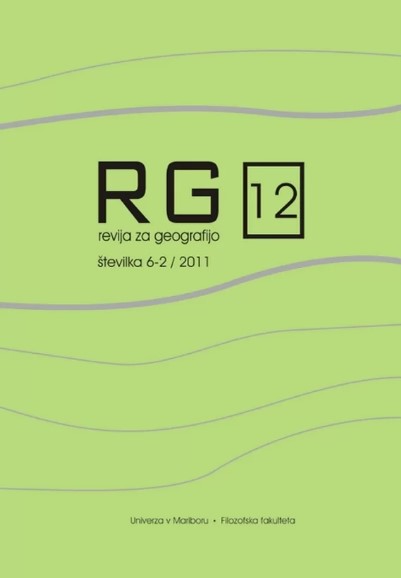Walking: mobility that ensures sustainability
DOI:
https://doi.org/10.18690/rg.6.2.3847Keywords:
walking, concept of sustainability, sustainable mobility, urban formAbstract
The paper deals with the oldest and most basic manner of spatial mobility, walking. Every journey begins and ends with walking. In the past, walking was the main mode of transport, however, with the expansion of motorisation its importance began to decline. Today, it is the most environmentally sustainable form of transport, with zero-emission. The pedestrian impact on the environment is minimal. As a form of physical activity it has a positive effect on people. The first part of the paper offers a theoretical framework of the importance of walking through history, mobility and the concept of sustainability. The analysis of the measures and initiatives taken up in Europe is followed by a review of studies based on the concept of sustainable development and the relationship between urban form and walking. The concept of sustainability has led to the question of how to improve the quality of the urban environment by reducing dependence on cars and introducing non-motorised forms of mobility. The paper concludes with examples of good practice from European cities.
Downloads
References
Alayo, J. 2002: Pedestrian accessibility and city form. Walk 21. San Sebastian.
EC 2004: Reclaiming City Streets For People, Chaos Or Quality Of Life?. European Commission Directorate-General For The Environment.
Gunnarsson, S. O. 2004: The pedestrian and the city - a historical review, from the Hippodamian city, to the modernistic city and to the sustainable and walking-friendly city. Walk 21. Copenhagen.
Holden, E. 2007: Achieving sustainable mobility, Everyday ald leisure-time travel in the EU. Hampshire. https://doi.org/10.4324/9781315565491
Jou, K. K. 2011: Pedestrian Areas and Sustainable Development. World Academy of Science, Engineering and Technology.
Kajfež, T. 2011 : Življenje v rimskem mestu, Predstavitev na primeru Pompejev. Društvo vseživljenjsko učenje. Kranj.
Komisija evropskih skupnosti 2001: Bela knjiga, Evropska prometna politika za 2010: čas za odločitev. Bruselj.
Komisija evropskih skupnosti 2007: Zelena knjiga, za novo kulturo mobilnosti v mestih. Bruselj.
Kresnik, A., Orož Hanžič, S. 2011: Urbanizacija prometa in cestna infrastuktura. Učbenik, Prometna šola Maribor. Ljubljana.
Medmrežje 1: Evropski dan "V mestu brez avtomobila!" Pridobljeno 25.10.2011, iz http://www.dba.mop.gov.si/2002/prirocnik.pdf
Melia, S. 2009: On the road to sustainability, Transport and carfree living in Freiburg. Faculty of the built environment. Bristol.
Pelc, S. 1993: Razdalja kot eden temeljnih pojmov v prometni geografiji. Geografski glasnik. Ljubljana.
Pelc, S. 2010: Izbrana poglavja iz prometne geografije. Univerzitetni učbenik, Fakulteta za logistiko. Maribor.
Petršin, V. 2000: Evropske transformacije med virtualnim in realnim. Urbani izziv. Ljubljana.
Plevnik, A. 2004: Promet in trajnostni razvoj. Študijsko gradivo. Maribor.
Pogačnik, A. 1999: Urbanistično planiranje. Ljubljana.
Ravbar, M. 2005: Pogledi na usmerjanje trajnostnega naselbinskega razvoja - težnje, razumevanje in urbani menedžment kot instrument usmerjanja poselitve. IB Revija. Ljubljana.
Rodrigue, J. P., Comtois, C., Slack, B. 2009: The geography of transport systems. New York. https://doi.org/10.4324/9781315618159
Šašek Divjak, M. 2001: Trajnostni vidiki prenove mesta. Urbani izzivi. Ljubljana.
Litman, T. 2010: Land use impacts on transportation, How land use factors affect travel behaviour. Victoria Transport Policy Institute. Victoria.
Williams, K. 2005: Spatial Planning, Urban Form and Sustainable Transport. Oxford. https://doi.org/10.4324/9781315242668
Downloads
Published
Issue
Section
License
Copyright (c) 2011 Darka Jezeršek

This work is licensed under a Creative Commons Attribution 4.0 International License.
